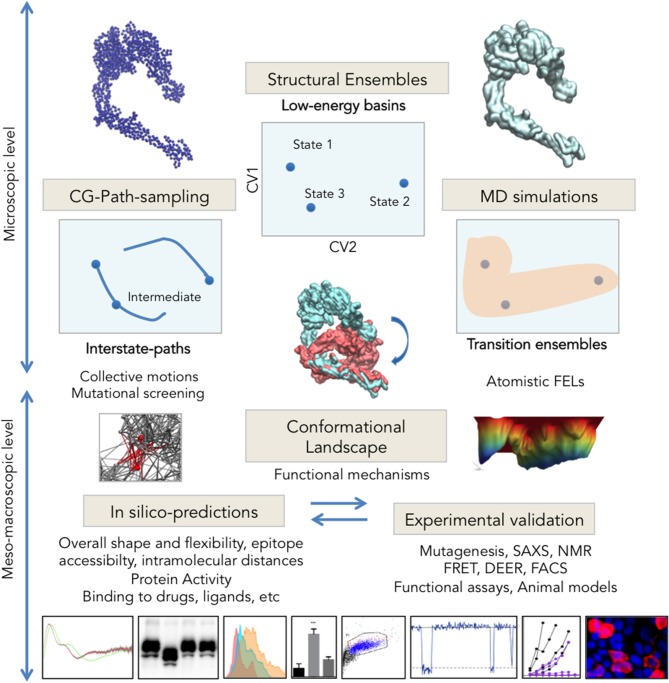Figure 2.
Integrative multi-scale structural biology. Experimental techniques are solving an increasing number of structures trapped in different energy basins, which through ensemble-analysis like PCA can yield intrinsic CVs for landscape exploration (Top Center). Transition pathways computed e.g., from CG-models (Right) connect experimental states allowing for intermediate assignment, provide insights into collective motions and can facilitate identification of key regions for mutational analysis. Long or enhanced MD simulations sample the configuration space with atomistic detail and allow reconstructing the complete FEL. Integration of microscopic data on conformational changes generates higher-scale predictions on protein shape, activity and interactions (Bottom) that can be tested through structural and molecular biology (microscopy techniques, SAXS, functional assays, etc. See examples in Table 2).

